|
|
|
|
With another seven days of lockdown on the cards for those in Melbourne, many are cursing the hotel quarantine system responsible for the outbreak, and wondering how many more they’ll have to endure.
The federal government claims hotel quarantine is a highly effective system, yet new modelling shows for every 204 infected travellers in hotel quarantine, one outbreak occurs.
With no changes and just over 300 infected travellers a month, we can expect 1.5 leaks every month. But there are ways to improve Australia’s quarantine system, as Driss Ait Ouakrim and his colleagues explain.
And a big thank you to the 14,000 of you who have donated to our annual campaign. Thank you for supporting evidence-based news. If you haven’t contributed yet, please consider making a donation today.
|
Fron Jackson-Webb
Deputy Editor/Senior Health + Medicine Editor
|

|
|
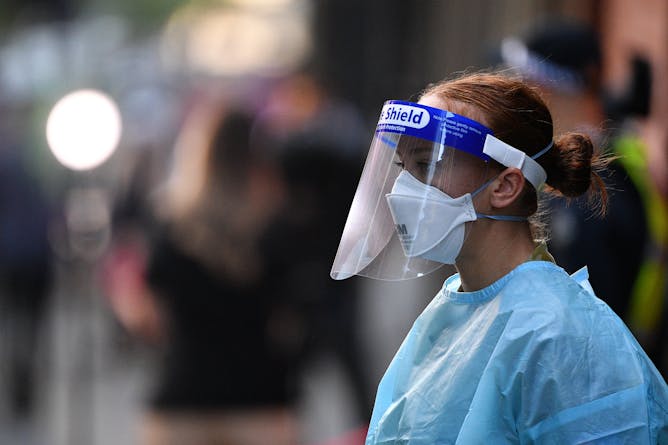
James Ross/AAP
Driss Ait Ouakrim, The University of Melbourne; Ameera Katar, The University of Melbourne; Tony Blakely, The University of Melbourne
The government says hotel quarantine is 'serving Australia very well'. But if you look at the leaks as a proportion of COVID-positive returnees, it's a different story.
|

James Ross/AAP Image
Catherine Bennett, Deakin University
People are not more likely now to get infected by brushing past someone on the street. We're just better at finding links between cases.
|
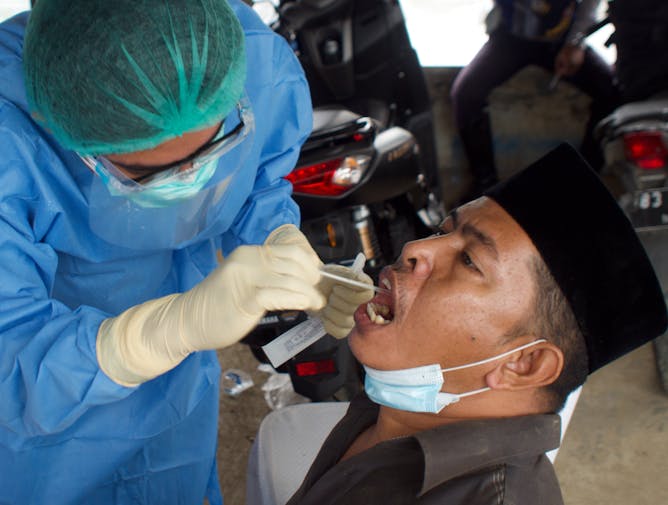
ADI WEDA/EPA
Tim Lindsey, The University of Melbourne; Max Walden, The University of Melbourne
New cases have more than doubled in the past two weeks, sparking concerns that last month's Eid holiday could have been a super-spreader event.
|
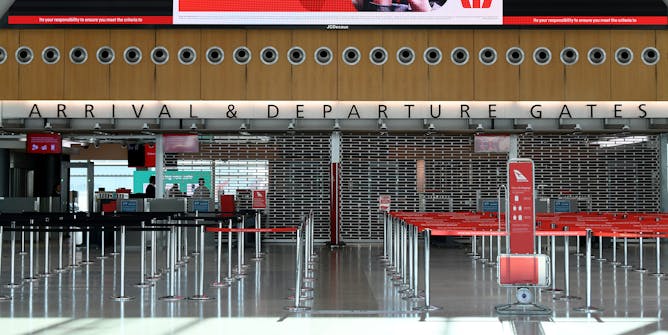
Bianca De Marchi/AAP
Andreas Chai, Griffith University; George Verikios, Griffith University; Tom Nik Verhelst, Griffith University
To calculate the cost of Australia's closed border, we've focused on estimating losses from international tourists and students.
|
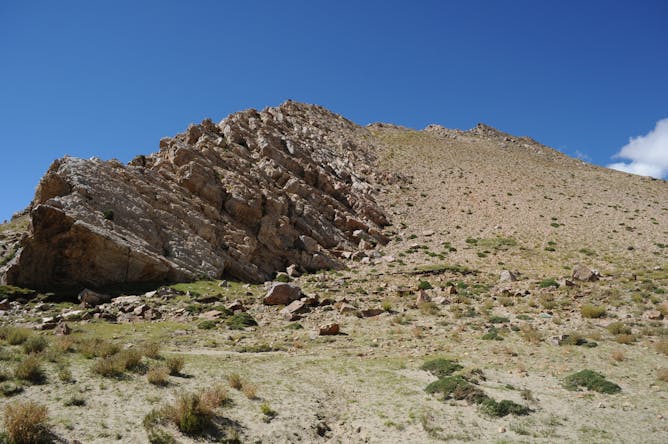
Mark Aldenderfer
Jan-Hendrik May, The University of Melbourne; Luke Gliganic, University of Wollongong
The Su-re site has provided a historical connection between local Tibetans in the highlands with Nepali Sherpas in the Himalayan lowlands.
|
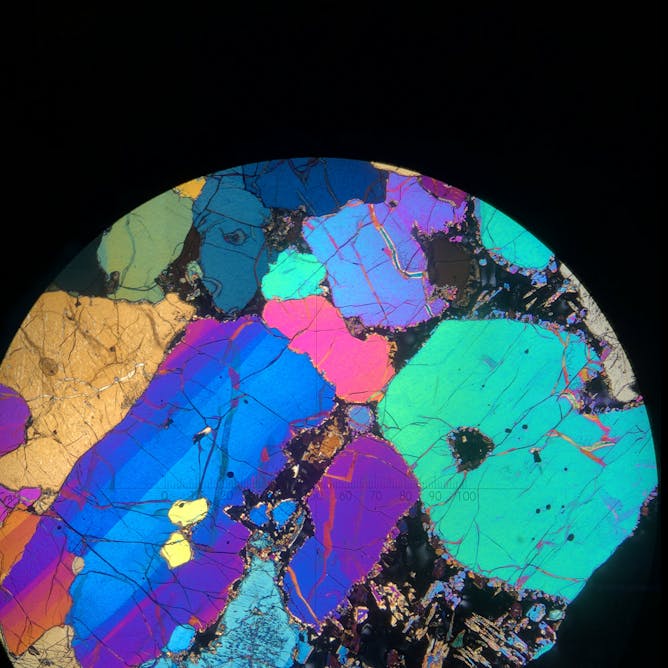
This isn’t a painting or a stained-glass window — it’s a microscope image of light shining through the Earth’s mantle.
Heather Handley
Heather Handley, Macquarie University
I look at fragments of the Earth's mantle under a microscope to learn how fast molten rock moves from deep in the Earth to the surface. This can help us prepare for future volcanic eruptions.
|
Business + Economy
|
-
Peter Martin, Crawford School of Public Policy, Australian National University
Things looked good, although we were still cautious at the end of March. Our national accounts are prepared with a lag.
-
Dallas Rogers, University of Sydney; Chris Gibson, University of Wollongong
James Packer's Barangaroo tower has not just changed Sydney's skyline. It has changed the whole planning system.
|
|
Education
|
-
Kristen Lyons, The University of Queensland
In a volatile and uncertain world, academic freedom is the foundation of universities' capacity to be responsive to all of the challenges we face today.
|
|
Arts + Culture
|
-
Mark Byron, University of Sydney
Samuel Beckett's first play was once most notorious for the audible yawns, walkouts (and fights) during interval. But it is a play of great insight into the condition of waiting.
-
Kathryn Williams, The University of Melbourne
Children need to connect with Australia's bountiful variety of trees. New picture books are helping them to do so.
|
|
Science + Technology
|
-
Nicola Gaston, University of Auckland
The government's 10-year target is to increase research and development funding to 2% of GDP. Investment in science in the latest budget is out of step with that goal.
-
John L Hopkins, Swinburne University of Technology
Shutdowns at microchip factories, panic-buying by electronics manufacturers, and legions of workers and home-schoolers needing new devices, have put a global squeeze on the electronics market.
|
|
Politics + Society
|
-
Michelle Grattan, University of Canberra
Michelle Grattan discusses the vaccine rollout, aged sector, and internal Labor politics with shadow minister Mark Butler
-
Professor Steven Larkin, Batchelor Institute of Indigenous Tertiary Education
In a survey of Stolen Generation survivors, two-thirds reported a decline in their physical health as a result of COVID restrictions, while 75% reported a decline in their mental health and wellbeing.
|
|
Environment + Energy
|
-
Jessica Allen, University of Newcastle; Tom Honeyands, University of Newcastle
Australia's abundant wind and solar resources mean we're well placed to produce the hydrogen a green steel industry needs. But there are technical and economic challenges ahead.
|
|
| |
Featured jobs
|
|
|
| |
| |
| |

|
| |
| |
| |
Featured Events & Courses
|

|
191 Boundary St, West End, Queensland, 4101, Australia — The Conversation
|

|
Online, Workshop, Victoria, 3000, Australia — Australia and New Zealand School of Government (ANZSOG)
|

|
Online Webinar, Sydney, New South Wales, 2007, Australia — University of Technology Sydney
|

|
Online, Workshop , Victoria, 3000 , Australia — Australia and New Zealand School of Government (ANZSOG)
|
|
|
|
| |
| |
| |
| |
| |
|
|
|
|
|
|
|